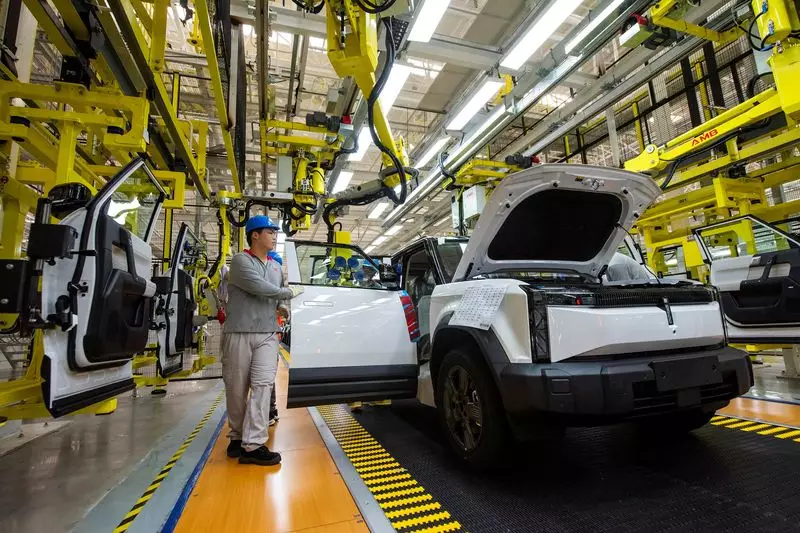China’s manufacturing activity in July experienced a downturn for the third consecutive month, according to an official factory survey. The official purchasing managers’ index (PMI) dropped to 49.4 in July, below the 50-mark that signifies growth. This trend has raised concerns about the need for further stimulus measures to counter the impact of a lingering property crisis and job insecurity on economic growth.
The slowdown in China’s manufacturing sector has been exacerbated by challenges in the consumer sector. Retail sales growth hit an 18-month low as businesses were forced to reduce prices due to deflationary pressures. The recent announcement of 300 billion yuan in ultra-long treasury bonds to support a consumer trade-in program is seen as insufficient, given that it represents only a small fraction of economic output and retail sales.
Despite solid export performance that has supported factory managers in recent months, concerns are mounting due to the possibility of increased import tariffs from trade partners. While outbound shipments have been strong, there are signs of weak domestic demand as evidenced by shrinking imports. This trend indicates that manufacturers are frontloading orders to mitigate the impact of potential tariffs, raising questions about the sustainability of export-led growth.
The slowdown in non-manufacturing activity in July, particularly in the services and construction sectors, underscores the impact of the long-standing crisis in the property sector. Depressed domestic consumption is linked to falling property valuations, with new home prices experiencing a significant decline in June. Analysts anticipate that the government will introduce additional policy measures to support the property market following discussions at the Politburo meeting.
In response to the challenges facing the economy, China has announced plans to step up macroeconomic policy and implement counter-cyclical adjustments. The focus will be on expanding domestic demand by stimulating consumption. These measures aim to address the broader economic issues arising from the slowdown in manufacturing activity and the associated risks to economic growth.

